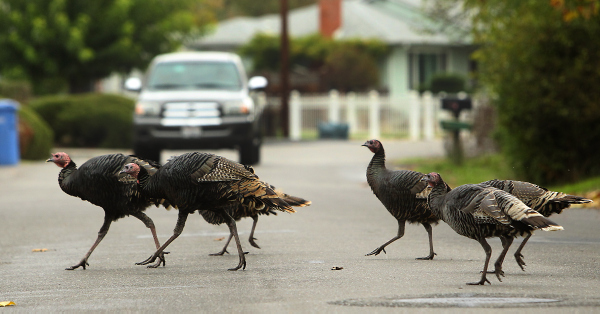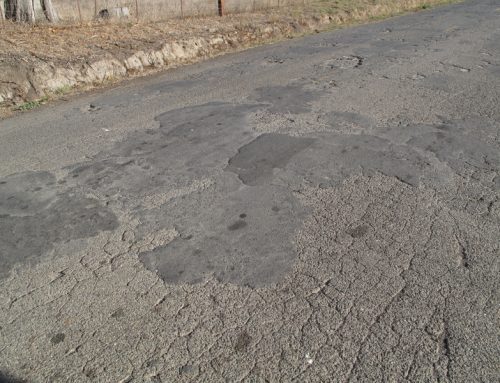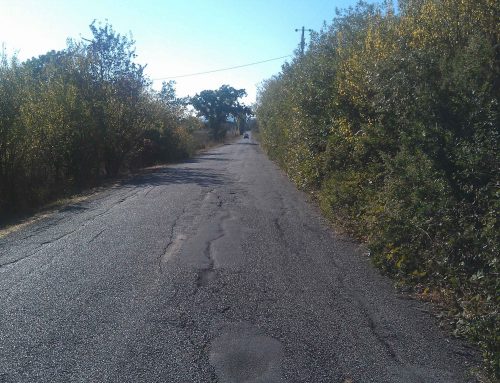We’ve got the perfect environment for wild turkeys in Sonoma County, with enough open grasslands and rolling oak woodlands to support thousands. So with all that available habitat, why do they wander into parks, backyards and even onto highways? At least two Road Warrior readers have encountered them on the asphalt.
Wildlife officials describe wild turkeys as highly tolerant of humans, adding that they have moved into places they clearly don’t belong because their numbers have grown. Turkeys usually keep themselves busy eating bugs, but during the spring they’re also mating, hatching poults and generally enjoying the good life.
We like that kind of thing here in Sonoma County. Just ask Andrew Smith of Santa Rosa, who writes:
“On Friday afternoon after a day of golf at Bennett Valley Golf Course, I drove home on Yulupa to Bethards towards Summerfield Drive. After turning left on Summerfield towards Montgomery Drive, the traffic comes to a halt in both directions.
“There is no crosswalk, I cannot see anyone crossing the street or someone riding a bicycle. So then the traffic starts up, and as I pass the place where the cars stopped, a group of wild, grown turkeys had crossed the street. People were patient and courteous to these turkeys. No complaints or horn honking.
“Now only if drivers, bicyclists and pedestrians acted this way, many of the issues on the road would go away.“
Mark Heydon of Tomales approaches the subject from another perspective. He asks: “Is a driver under any legal obligation to avoid wild life, specifically turkeys, crossing a road in front of him/her?”
CHP Officer Jon Sloat provides the answer: “A driver is under no legal obligation to avoid wildlife. However, size is a factor you have to take into account when deciding to hit or take evasive action. I saw a turkey hit on the freeway last week. Exploded like a feather bomb.”
There’s something else about wild turkeys that might make Road Warriors curious. Turkeys can run at speeds up to 25 mph and fly at up to 55 mph. So if they’re flying full speed down a street with a 35 mph speed limit, can they be ticketed?
Still want more? These facts come from the National Wild Turkey Federation:
* Turkeys usually feed in early morning and in the afternoon.
* Turkeys have excellent vision during the day but don’t see as well at night.
* When mating season arrives between February and April, courtship usually begins while turkeys are still flocked together in wintering areas.
* After mating, the hens begin searching for a nest site and laying eggs. In most areas, nests can be found in a shallow dirt depression, surrounded by moderately woody vegetation that conceals the nest.
* Hens lay a clutch of 10 to 12 eggs during a two-week period, usually laying one egg per day. She will incubate her eggs for about 28 days, occasionally turning and rearranging them until they are ready to hatch.
* A newly-hatched flock must be ready to leave the nest within 12 to 24 hours to feed. Poults eat insects, berries and seeds, while adults will eat anything from acorns and berries to insects and small reptiles.
——————
Follow the Road Warrior on Twitter at @PDRoadWarrior. Send questions to Linda.Castrone@pressdemocrat.com, Subject: Road Warrior.




